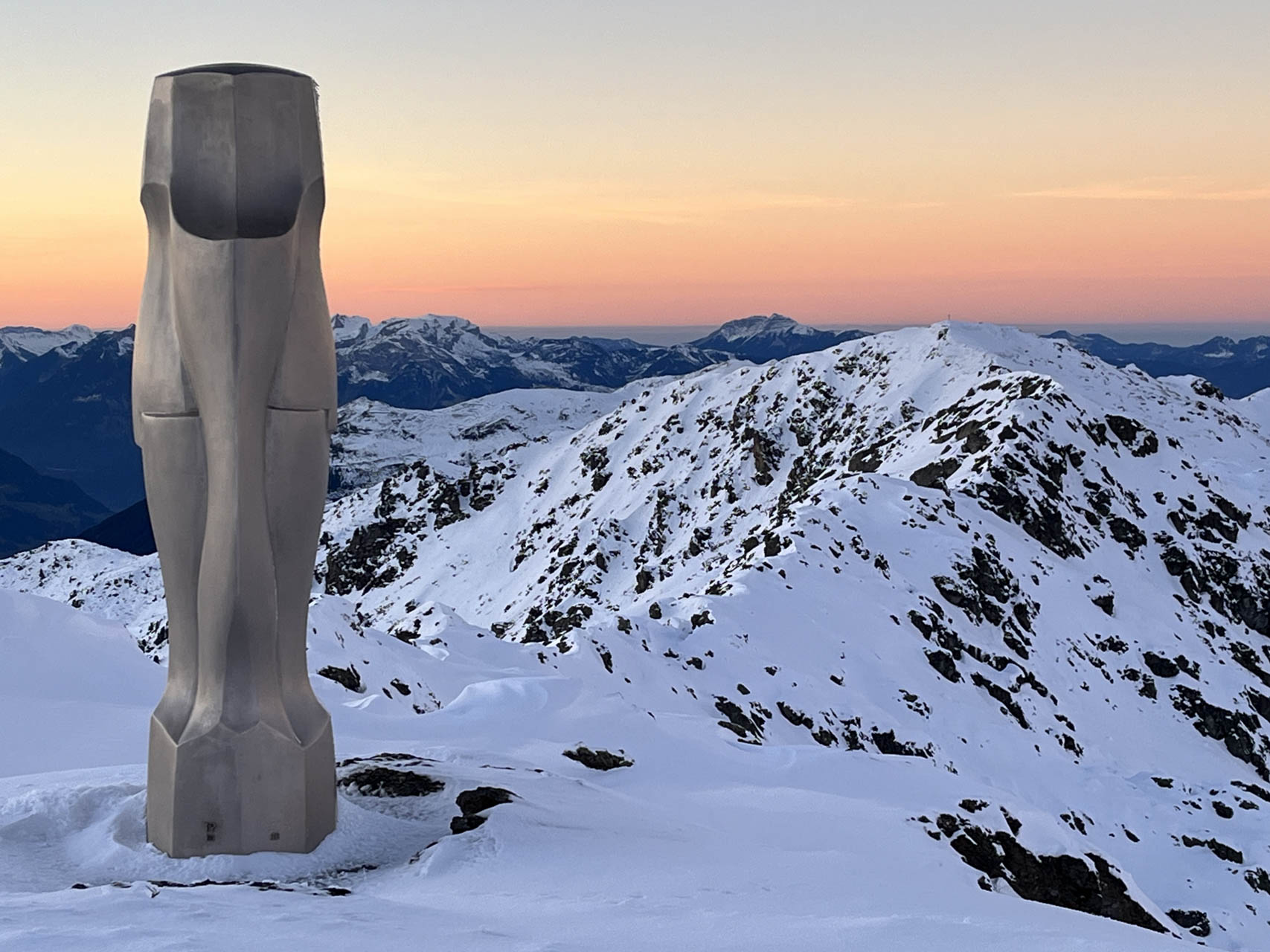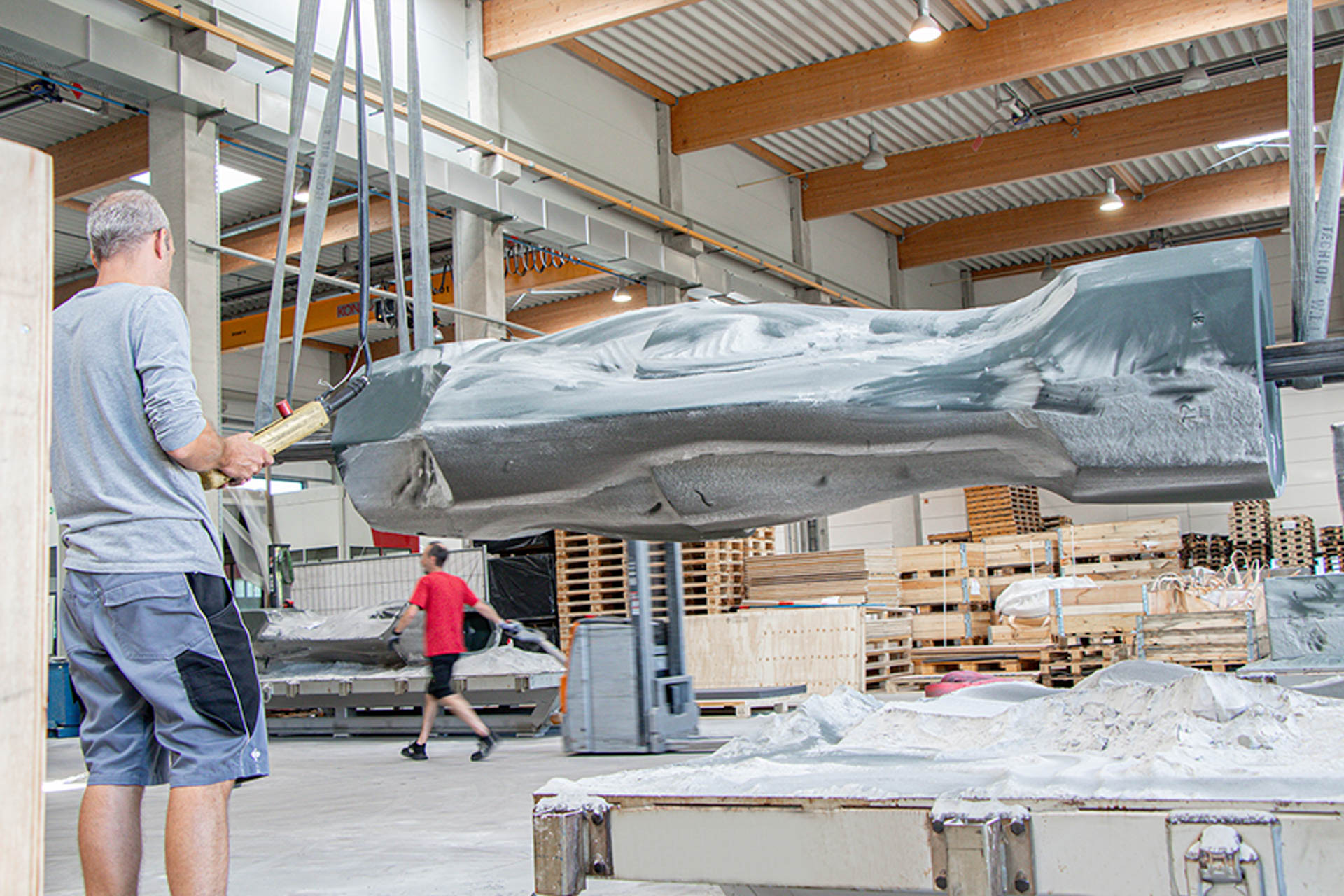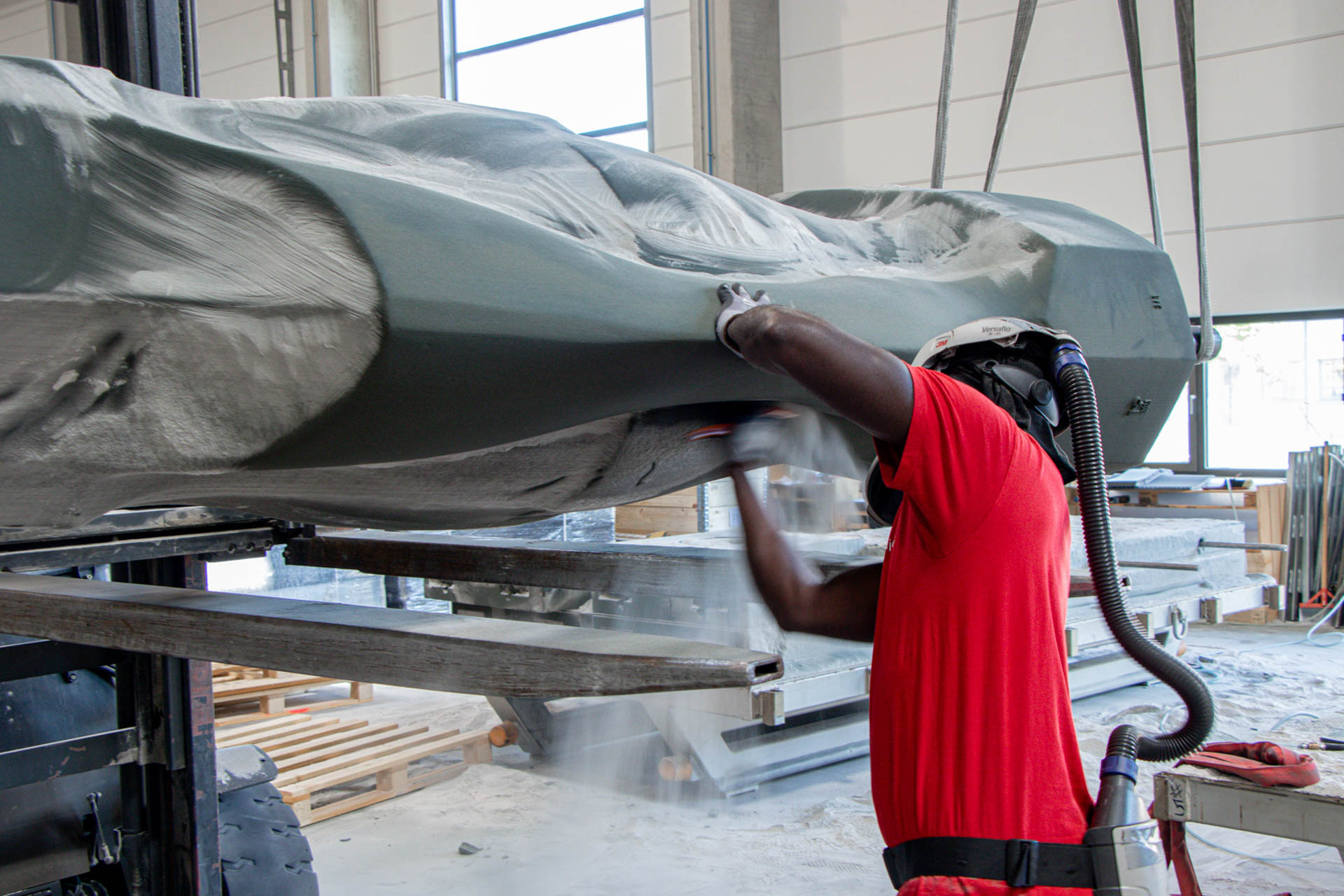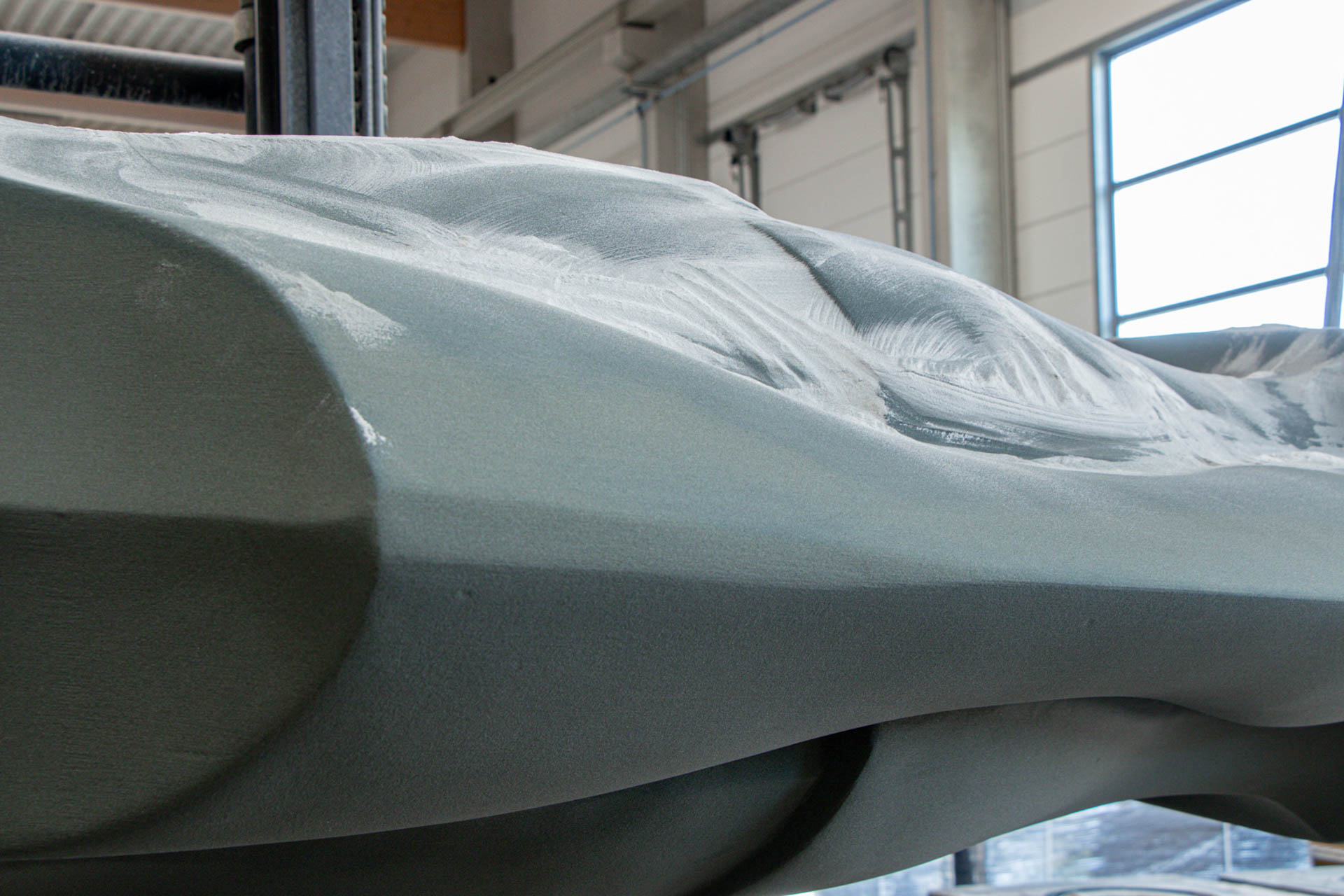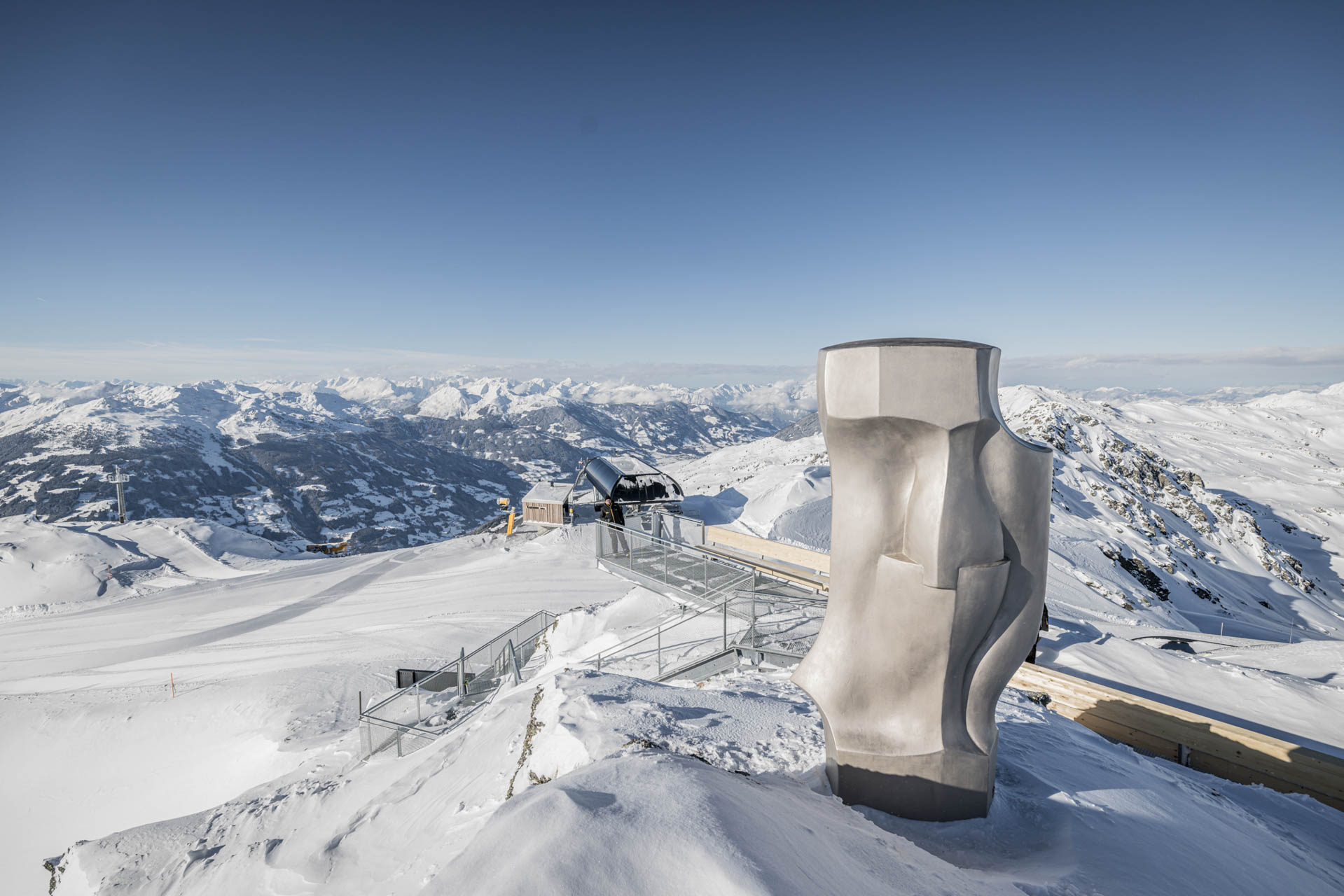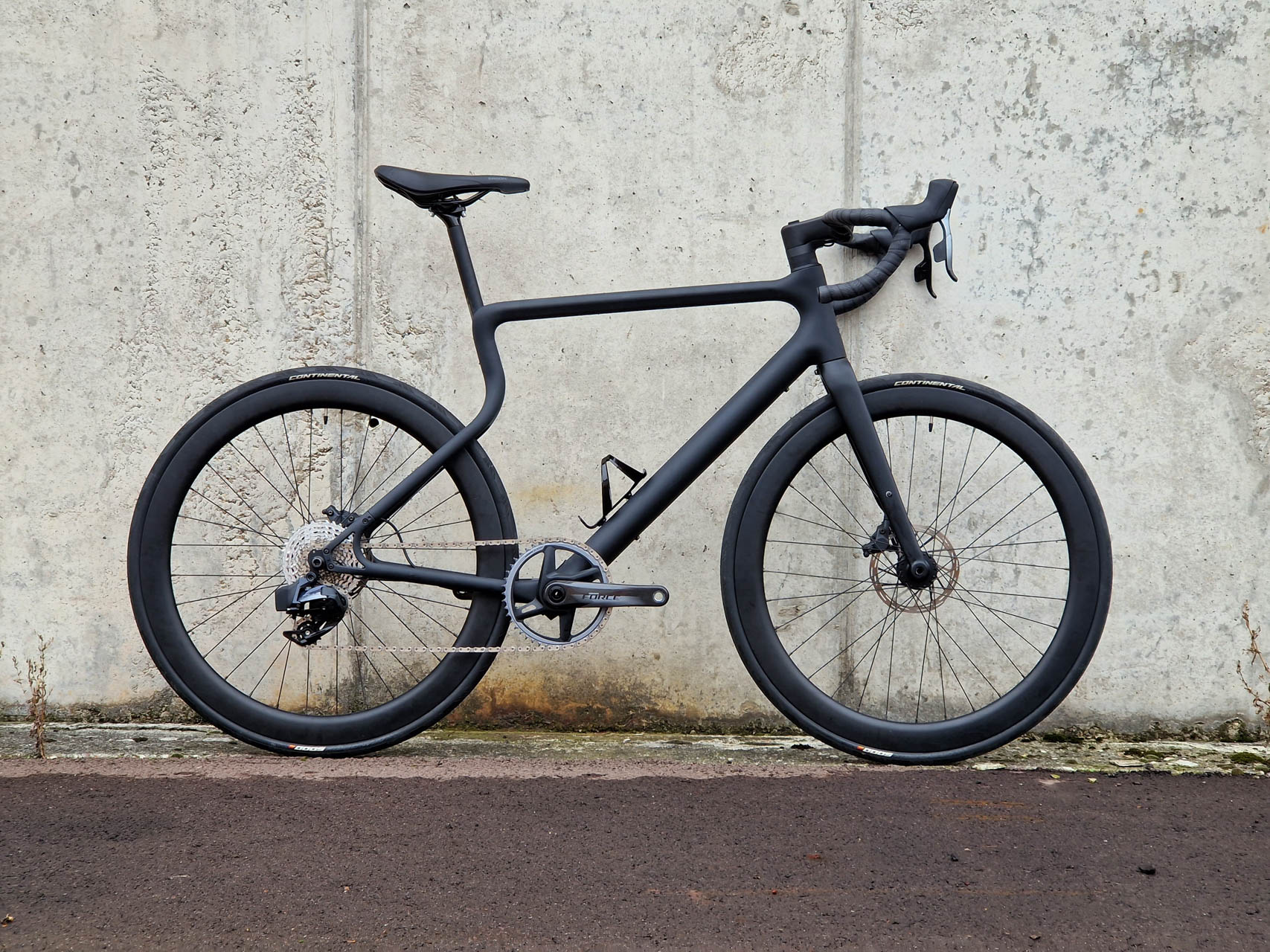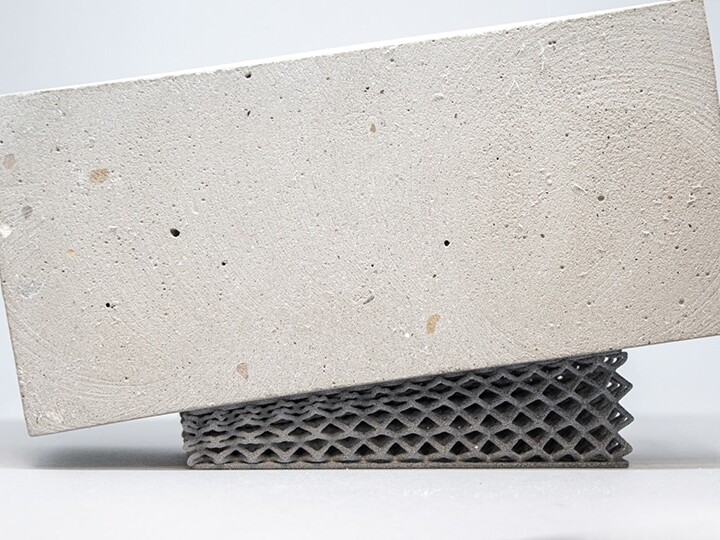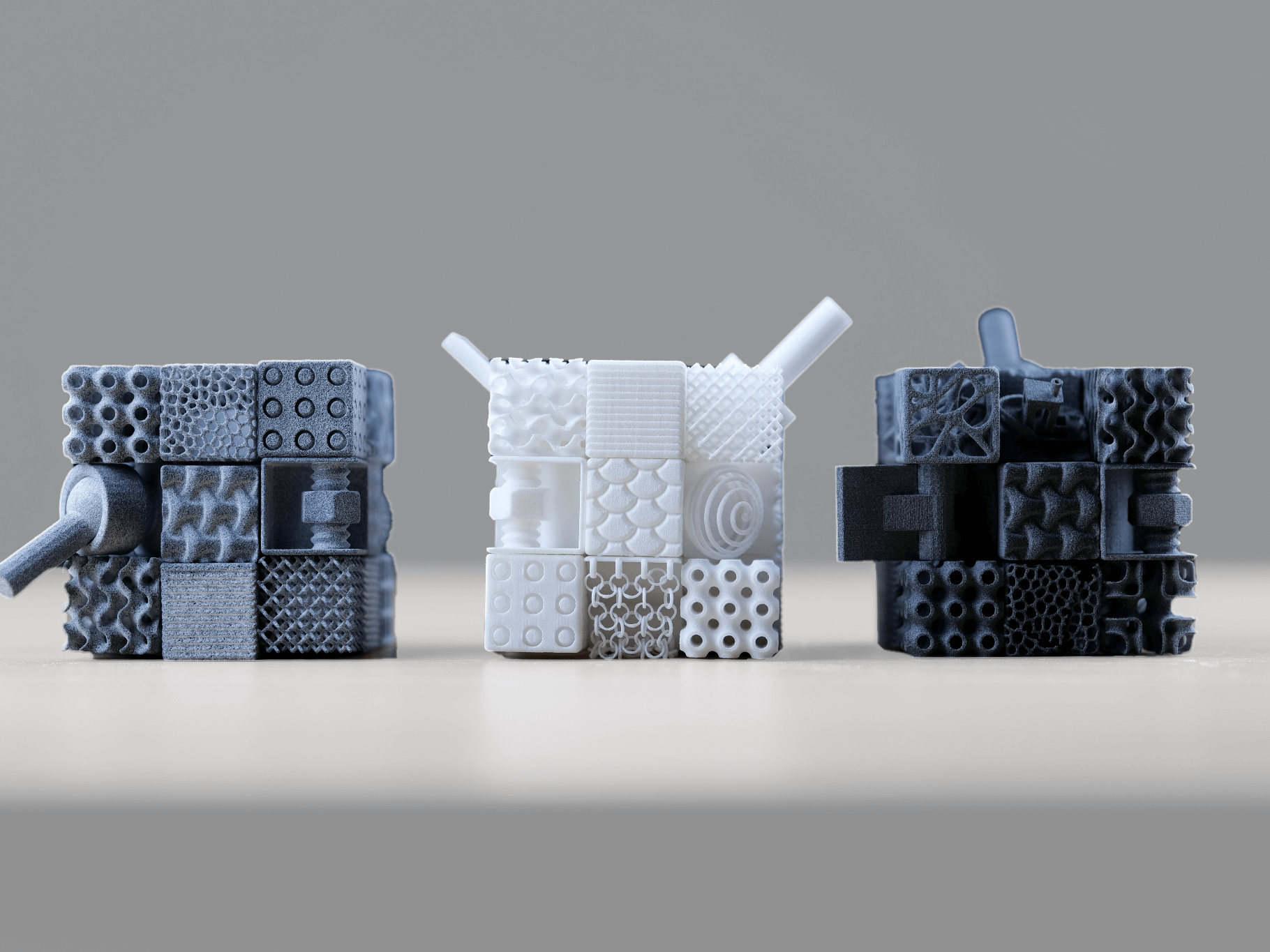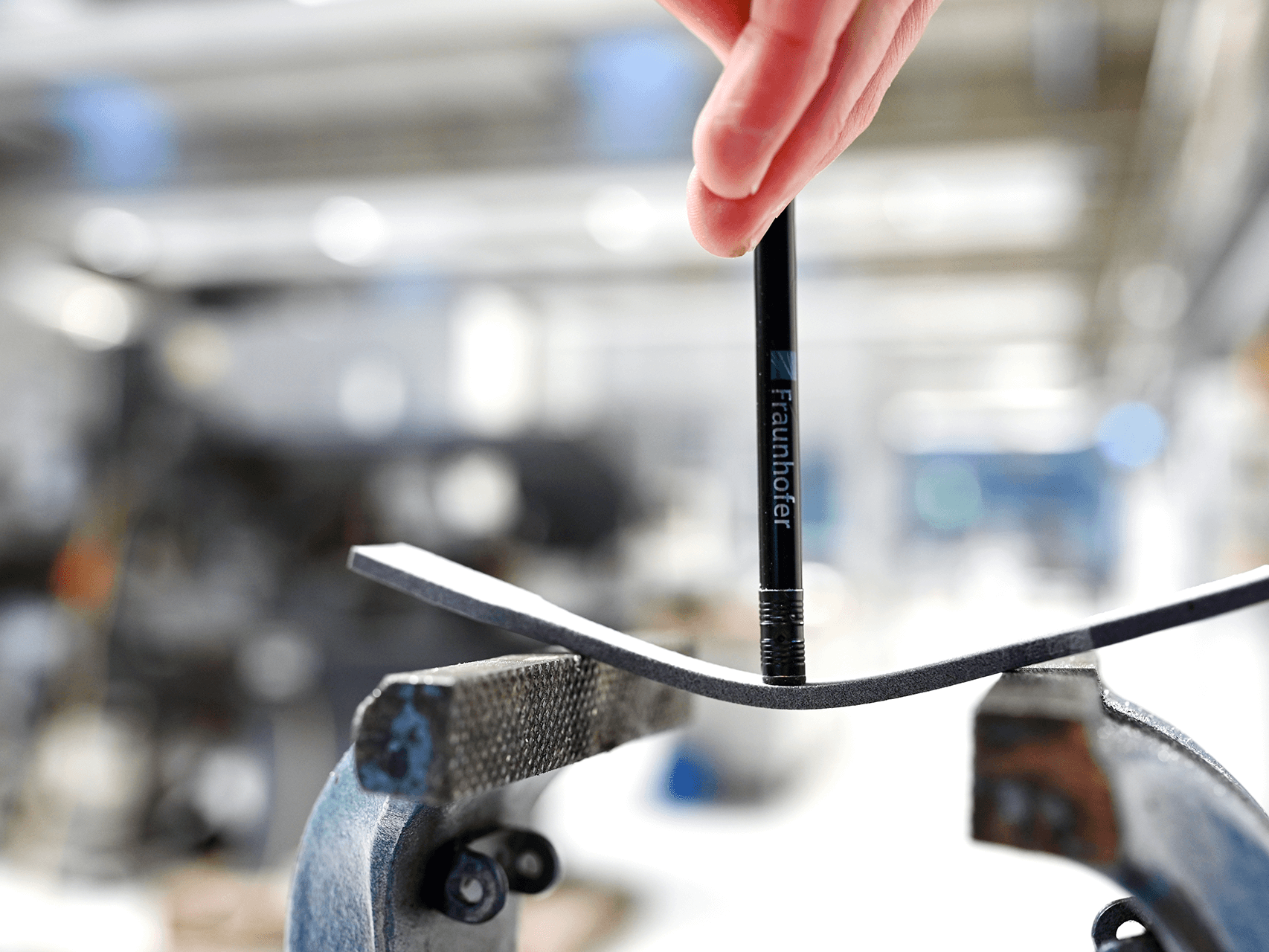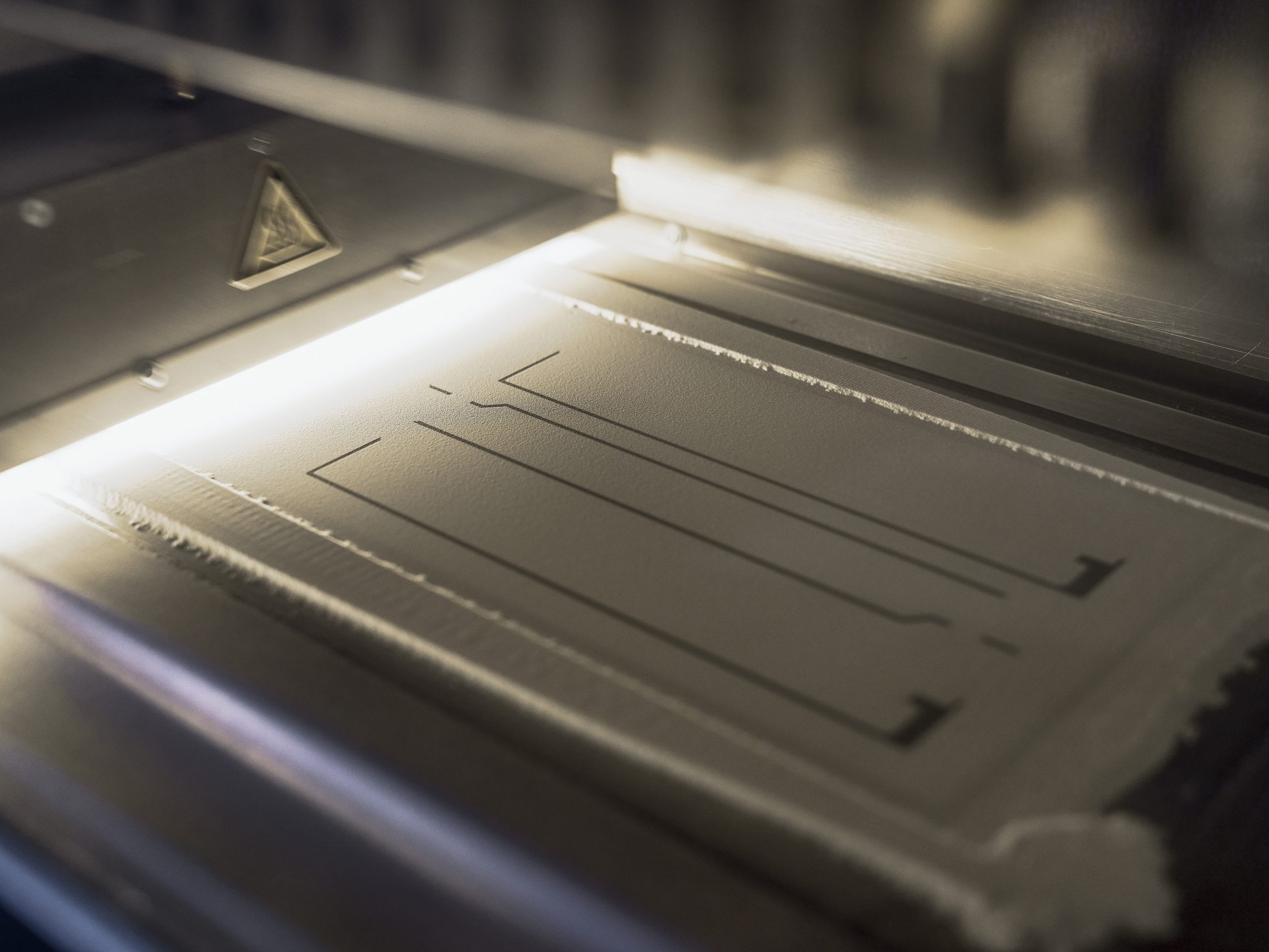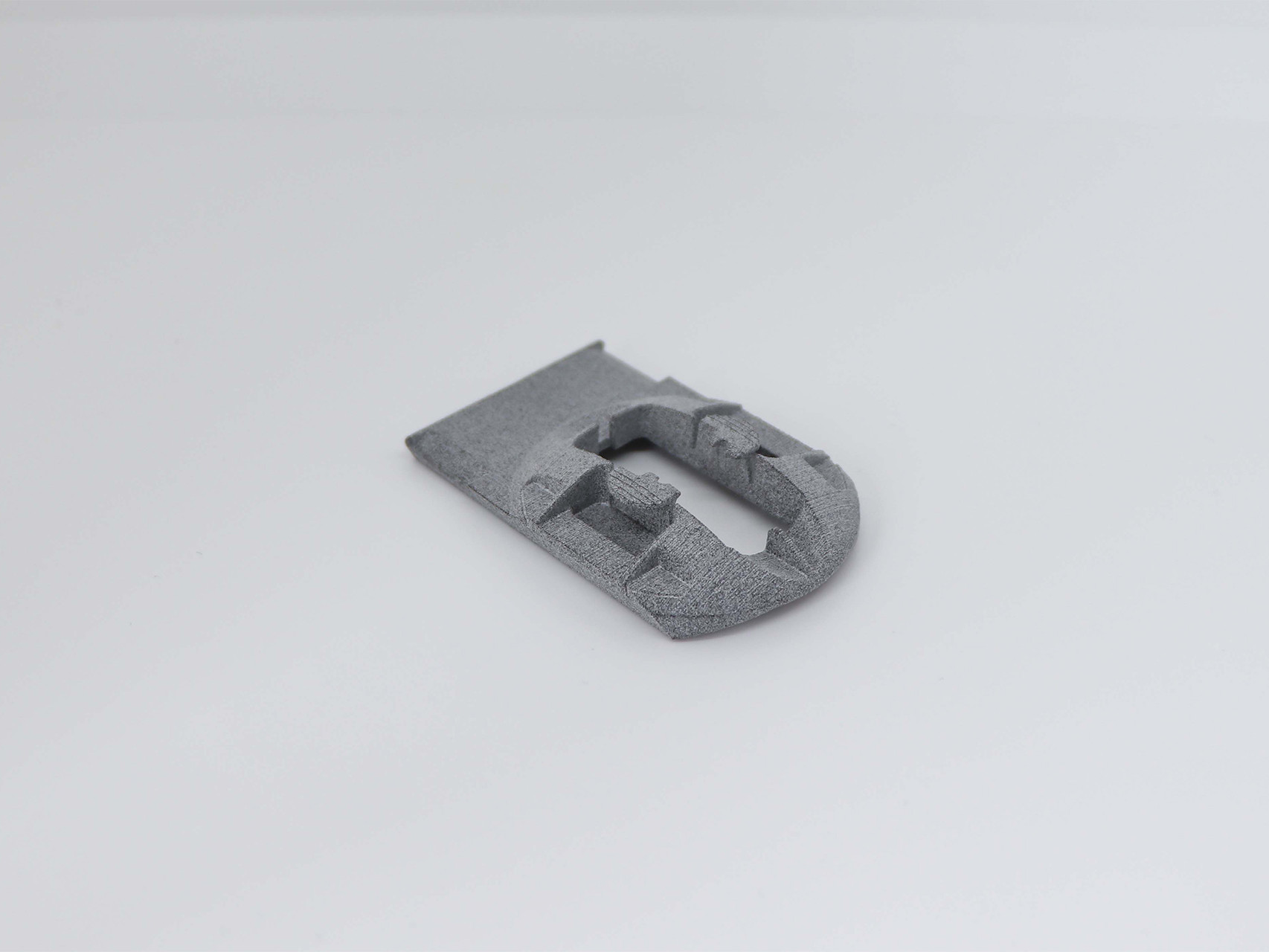- Home
- Case Studies
- Art and Design
- 3D-printed sculptures at 2500 metres
3D printingat 2,500 meters
At the Zillertalarena, a popular winter sports resort around 40 kilometres east of Innsbruck in Austria, three unique sculptures by Tyrolean artist and sculptor Magnus Pöhacker stand at an altitude of around 2,500 metres. In addition to the height and the impressive view, the three head sculptures, each about 2.8 metres high and weighing 1.5 tonnes, are special because they were created using 3D printing.
The Challenge
It has always been a dream of Magnus Pöhacker’s to present his artwork in the legendary mountain landscape of Tyrol. This dream has come true on the viewing platform of the top station of the new ‘Wild Krimml’ gondola lift.
Initially, three small plaster sculptures by the artist were available to be scaled up and produced using 3D sand printing. The target size was set at 2.8 meters.
These plaster sculptures were scanned by voxeljet partner WESTCAM in Austria. An optical 3D measuring device takes a large number of images from all sides of the artwork. The result is a digital model that is described with high precision using millions of digital points. This model can be edited and scaled as a computer-aided design (CAD).
The focus was, of course, on scaling the sculptures to the target size of 2.8 meters. In addition, the experts at WESTCAM integrated various functionalities directly into the 3D models. These included recesses for the column supports and the mounting reinforcement for the subsequent installation. As it was clear from the outset that the sculptures would be produced using 3D sand printing, there were no geometric limitations.
3D printing
Once digitally designed, the three sculptures were printed on the VX4000. The printer slices the CAD model into thousands of digital layers. Each layer represents a cross-section of the object. Then the binder jetting technology begins: the recoater applies a 300 micron layer of sand to the build platform. A high-resolution print head (300 dpi) then selectively prints the sand layer. The sand is bonded by polymerisation in the areas corresponding to the cross-section of the object, while the rest of the sand remains loose. At the same time, the box itself is printed by printing the outermost areas of the platform. After each layer, the recoater and print head are raised by the thickness of the layer and a new layer of material is applied and bonded. This process continues until the desired height of the object is reached or the box is full. After printing, the components can be unpacked from the box and the loose sand removed.
At 4 x 2 x 1 meters, the VX4000 is one of the largest 3D printers in the world. This meant that the sculptures could be printed in one piece. Each sculpture took 18 hours to print.
Finish and Installation
After printing, the sculptures were sent back to the studio of Magnus Pöhacker in Tyrol. There, the artist treated them with special coatings, including a water-repellent finish. The coatings were specially developed for the extreme weather conditions at the summit. This means that the sculptures not only withstand snow, rain and ice, but are also protected from UV rays.
Finally, the project managers had to overcome the last and possibly greatest challenge: Installation at 2,500 meters. In snow and sub-zero temperatures, the sculptures were transported by truck up the mountain and finally erected by crane. The entire project, from planning to installation, was completed in just 3 months.
Today, the three abstract heads not only symbolise the triad of tourism, art and construction. They are also the largest 3D prints ever produced by voxeljet. A masterpiece of craftsmanship, technology and expertise, a roof over the no longer so small world of additive manufacturing.
More Case Studies
3d printed joysticks for tractors and machines
For Lindner Traktorenwerke, 3D printing is already an alternative to injection molding. For example, for customized joysticks and control elements for their tractors.
URWAHN – 3D printing in bike manufacturing
To produce its e-bikes, URWAHN has focused on reshoring and lean management and is achieving these goals through additive manufacturing. Learn what role the voxeljet technology plays.
HSS Material Network – Proof of Concept TPU Launhardt
The HSS Material Network has published a new proof of concept. The TPU from the manufacturer Launhardt is one of the softest on the market.
Industrial Polymer 3D Printing Review: An extensive comparison of voxeljet HSS, HP MJF, and SLS
Whats the difference between HSS, MJF and SLS polymer 3D printing? Get to know the three main AM technologies for polymers in this extensive comparison.
HSS Material Network – Proof of Concept HDPE
Together with Fraunhofer IPA we have qualified the polymer HDPE for additive manufacturing within our HSS Material Network.
HP Multi Jet Fusion and voxeljet High Speed Sintering in comparison
The 3D printing processes MJF and HSS in comparison: Where are the differences and advantages for users?
Polymer sintering in custom mechanical engineering
With High Speed Polymer Sintering, prototypes can be realized much faster and economically viable.
Industrial 3D Printer
Our portfolio of industrial 3D printers ranges from compact systems for research to additive series production.



















